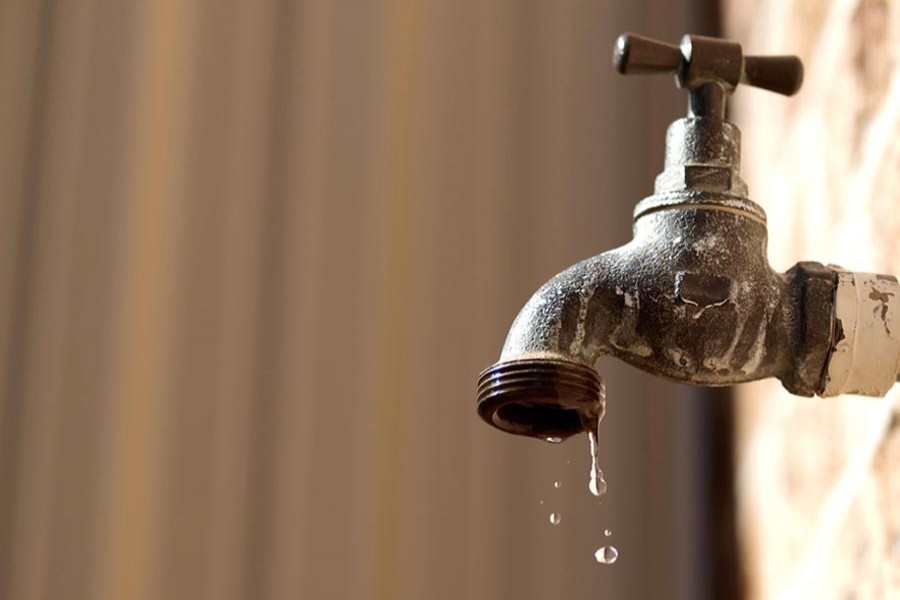Water pumps lie idle during the hour-long power cuts, which now occur with greater frequency, disrupting life in much of the city
For large parts of the day, life in much of Dhaka is punctuated by a string of power outages leaving residents faced with unrelenting heat and other hardships in the lurch, reports bdnews24.com.
To make matters worse, the revival of the dreaded load-shedding regime, borne out of an escalating energy crisis globally, has had a crippling effect on the water supply to large swathes of the city, hampering daily chores such as cooking, cleaning and bathing
Many pumps operated by the Dhaka Water Supply and Sewerage Authority, or WASA, and those in the residential and commercial buildings are rendered inoperative during the hour-long power cuts that now occur up to six times a day.
All of WASA's pumps are meant to run 24 hours a day, provided the power supply is uninterrupted.
Even if there is water in the supply line, without electricity, it cannot be pumped up to the rooftop tanks. In some buildings, the owners also use pumps to draw water from the lines.
WASA has deployed more than 900 water pumps across the city. But the pumps cannot operate without electricity, becoming inactive during power outages
Frustrations have been running high over the situation across the city. On Sunday, aggrieved residents of Mohakhali took to the streets in protest against a worsening water crisis in their neighbourhood.
Others have little choice but to soldier on as their complaints came to no avail.
Through its Maintenance, Operation and Distribution System (MODS), WASA supplies water to different parts of the city, divided into 11 zones, using more than 900 pumps, including 60 kept as backups.
Some pumps are accompanied by diesel-run backup electricity generators, but WASA could not provide their exact number.
Abdullah Al Mamun, a landlord in South Donia, said the area is left without power for at least five hours every day.
“Our area was already facing a water crisis. Water comes to our area through a pump next to AK High School and College. But the pump stops whenever there's a power cut as there is no generator.
"As a result, the water does not enter the line. Again, even if the water comes into the line, it cannot be drawn if there is no electricity. We are in great misery.”
A water crisis has been plaguing the capital's Kaderabad housing area for quite some time now.
Since the national grid failure plunged half of the nation into darkness for a significant period on Oct 4, power outages have intensified in the neighbourhood, and so has the water crisis, according to Moushumi Acharya, a resident.
"The water supply stops for five to six hours a day. Water cannot be extracted without pulling it from the WASA line. As a result, the supply stops if the motor is not running. Even if we order water from WASA's tankers during emergencies, that cannot be added to the reservoir because they [WASA workers] leave when there is a power outage.”
ENERGY CRISIS BITES
As the war in Ukraine sent the global oil market into a frenzy, the government reacted by raising the fuel prices by as much as 50 percent to relieve the increasing strain on the country's foreign exchange reserves. Its impact has been far reaching, driving up living costs and disrupting public utilities such as gas and water services.
An executive engineer of a MODS Zone at Dhaka WASA, asking not to be named, said water production decreased after the government resorted to the policy of load shedding in July to conserve energy.
“Many water pumps run on fuel oil-based generators during power cuts. The fuel price hike has also created a problem,” the WASA engineer said.
Dhaka WASA's Padma Jashaldia Water Treatment Plant boasts the capacity of producing 450 million litres per day, but it usually produces 300 million litres for zones 1, 2 and 6 of the agency in the capital.
The plant does not yet have a generator, so it is shut down during outages, said an executive engineer, who also requested not to be named.
“Supply decreases during power cuts. The landlords who have extra pumps draw water from the lines, leaving nothing for those who don’t have extra pumps.”


